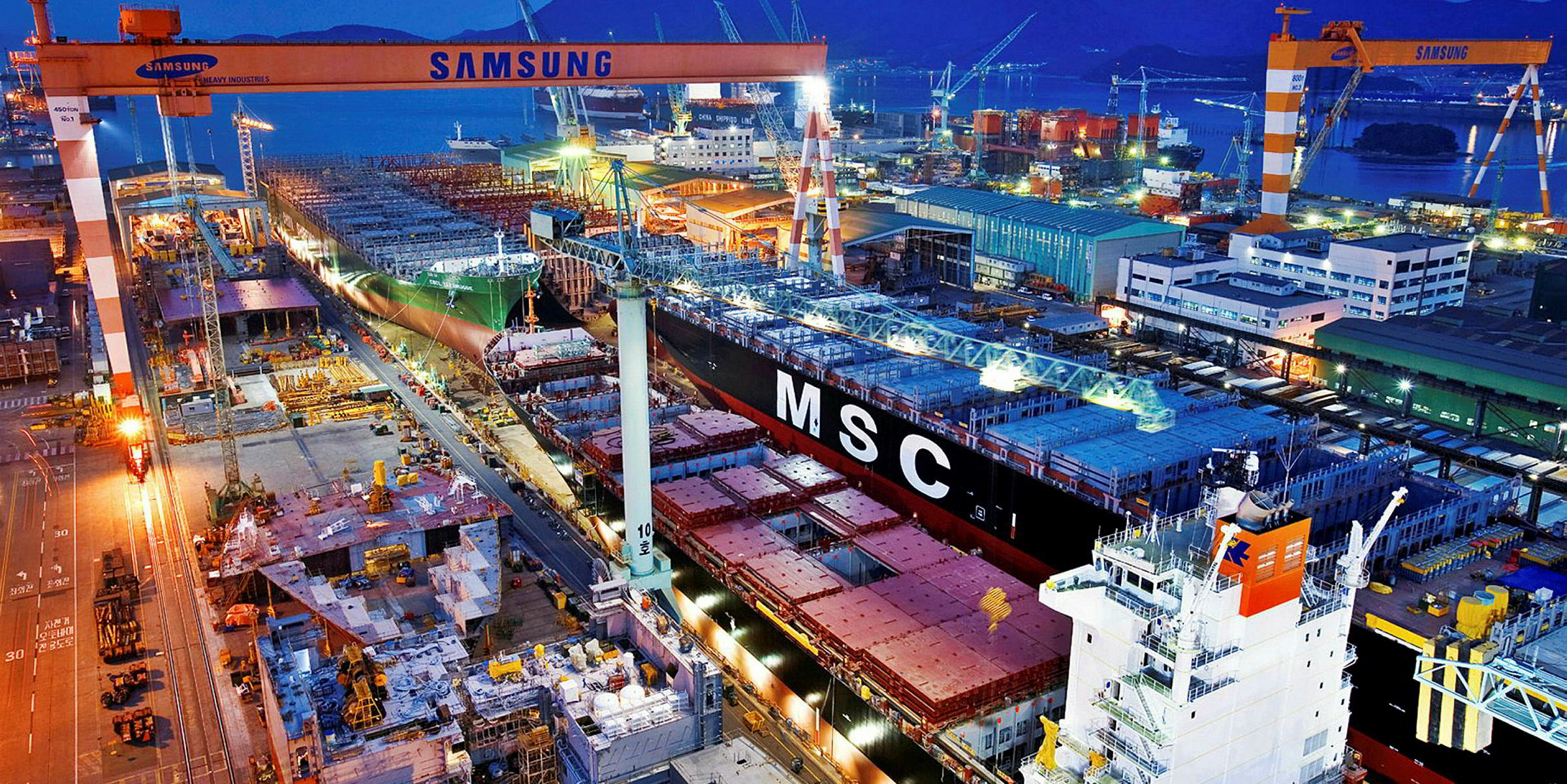Shipping consultancy Drewry believes the boxship sector is looking healthier as owners resist the urge to add more huge vessels to orderbooks.
“We believe that the industry’s supply-demand balance will benefit from a reduced appetite for ultra large container vessels (ULCVs) among the major carriers, some of which now have their eyes fixed on a bigger prize of becoming global logistics integrators," said Drewry's senior manager for container research, Simon Heaney.
"Aside from feedership replenishment, there has been no reaction from other lines to HMM’s mega-ship order and as such we have greatly reduced our projected new orders for 2020 onwards.”
HMM added 20 large vessels at the big three Korean yards last year.
Drewry said the supply-demand picture is looking brighter through 2022. The market will be tighter but still over-supplied, it added.
"Ultimately, we believe that these adjustments on the supply side will be sufficient to cushion the blow from slowing demand growth and will contribute to better freight rates and profits,” said Heaney.
Deliveries of new ships have been spread more widely than before, with more original 2018-19 newbuilds being pushed out to 2020, Drewry said.
Combined with an expected increase in demolitions, the net addition to the fleet is expected to be only half that of 2018, leading to a fleet growth rate of just 2.5%.
Drewry has already suggested that the supply side could be reduced as boxships head to yards for scrubber retro-fitting.
Heaney said: “Last year was one of the most unpredictable the container shipping industry has faced, and this year is likely to be similarly volatile with question marks still hanging over the US-China trade war and new fuel regulations.
"However, despite being dogged by uncertainty, Drewry is predicting another solid year for the market.”



